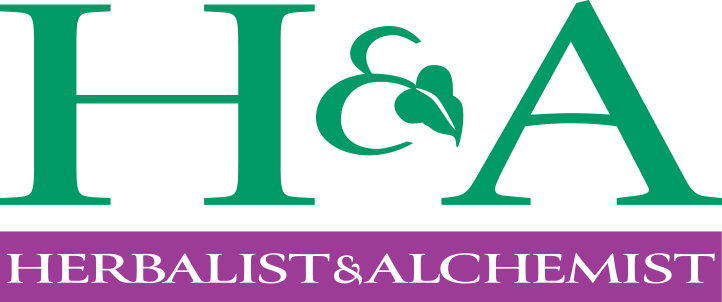Linda Shanahan is a graduate of David Winston's Center for Herbal Studies. She owns Barefoot Botanicals, a Certified Organic farm in Doylestown, PA (Now Bluestem Botanicals). Linda runs classes and workshops connecting People with Plants for Food, for Medicine and for our Collective Future. With nearly two decades of experience in the herbal industry, Linda blends the craft of farming with the art and science of herbalism. Herbs grown by herbalists. Barefoot Farms never sprays synthetic chemicals and actively works to build the soil life through cover crops, crop rotation, and additions of compost, making them a perfect vendor for providing raw botanicals to Herbalist & Alchemist.
How did you first become interested in medicinal herbs?
After graduating from college in Philadelphia, I joined the Americorps program and found myself in a small logging town at the California/Oregon border in the mid-90s. There was definitely some culture shock, but the ecological shock was felt to me I think even more deeply. I had never lived in a place that didn’t rain between May and November, leaving vast valleys of brown for much of the year. I loved the yellows, oranges and blues that covered the hillsides in spring and the dramatic elevation changes that the mountains offered, but I still felt homesick. I went into the places that were green and reminded me of home - into the woods. I felt peace and comfort in the woods and eventually wanted to learn more about what grew there. I started reading books, trying my hand at plant ID and using some common herbs for medicinal use. I wanted to learn whatever I could- I even took a foraged basket weaving class. With each step I realized I wanted to learn more and be closer to plants. With the internet being rather new to me I did a search and found information about an herbalist/botanist teacher in Eugene, OR named Howie Brounstein. I reached out to him - interviewed with Howie and his Co-teacher at the time Steven Yeager- and the next few years I spent studying and working with them as well as other Eugene area-herbalists and fell more in love with plants and the West Coast every day.
I understand you studied with David 2008 - 2012. How did you find David's course? How has studying with him impacted your herbal path?
In 2004 I decided to move back to the East Coast to be closer to family. I was feeling lost and depressed, not sure of whether I had made the wrong choice to return. While my husband was able to find his footing and found community by starting a small organic farm here in our town, I had searched for herbalists and had found very few. Knowing that I had more to learn, I set out to find another teacher. Speaking with Howie one day, he assured me that I needed to consider David. I wasn’t sure as I had wanted to find a female teacher but hadn’t found her yet. Putting one foot in front of the other I reached out to David, interviewed with him, and decided he was the right choice, and I am so glad I did.
Having studied with a number of herbalists over the prior few years, I hadn’t found a way to bring it all together. I went to nursing school thinking that I could learn more about people (which I did) but it left me wanting a deeper understanding of clinical applications of herbs- a cohesive, energetic way to assess and formulate. I was pulling from multiple traditions and lacking confidence, but David’s program provided all that I needed. He was clinically oriented enough to meet my broadening understanding of modern treatments of acute illness and gave me the tools to confidently work with people experiencing chronic illness- ideally helping them to avoid seeing me in the hospital setting. It took a while to learn but I fell in love with the Triune system of formulation. It just works like magic when trying to address a whole (and always complicated) person! Of course, the foundation of all of this is to first learn how to live well, which is at the core of all that David teaches. I am incredibly grateful for all that I learned, and I continue to learn from David every time I refer back to my notes from over decade ago.
What herbs do you grow for H&A?
Having grown vegetables for a number of years, my herb garden grew with each season as I learned more and more about plants. I taught some workshops and had started to sell some fresh herbs at the farmers market but it was never enough to justify large plantings. But at a farming conference that H&A CEO Beth Lambert also attended she mentioned a need for locally produced bulk fresh herbs. I was able to convince my husband and farming partner Eric that it was worth a try. We started in in 2015, I believe it was, with Tulsi, which was a joy to grow and harvest. We decided after that year to start transitioning the farm to herb production and built a drying room, commercial wash/pack facility, and ultimately in 2018 added a commercial kitchen for processing our herbs. Over the years we have grown other crops as requested by Herbalist and Alchemist. We have provided Tulsi, Catnip, Parsley whole plant, and this year we are adding Peppermint and Figwort (Scrophularia).
